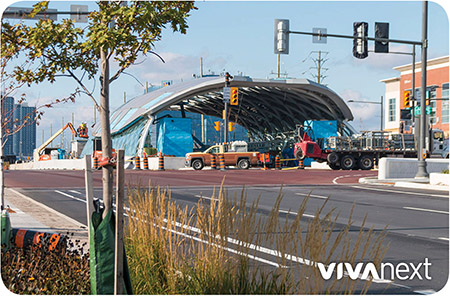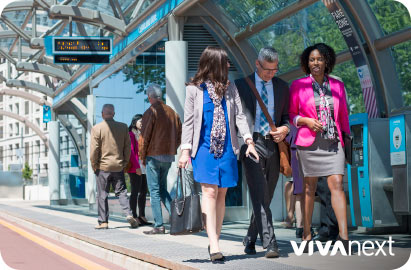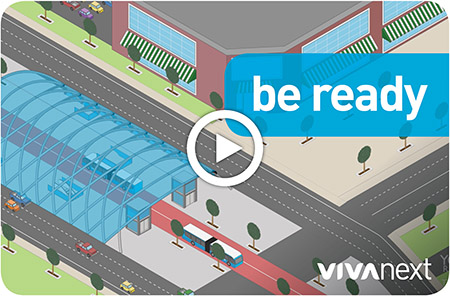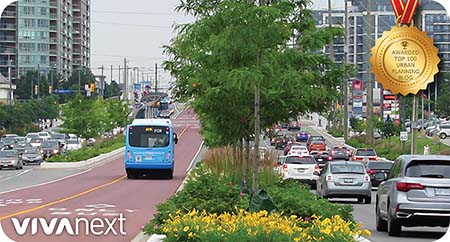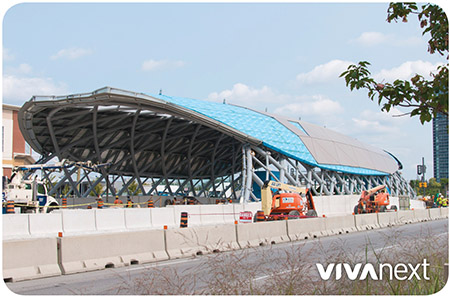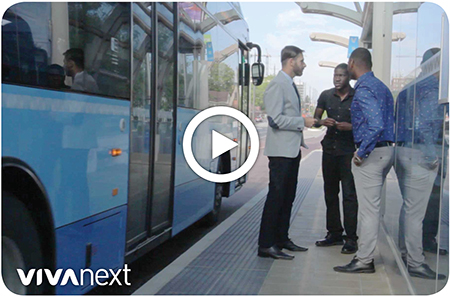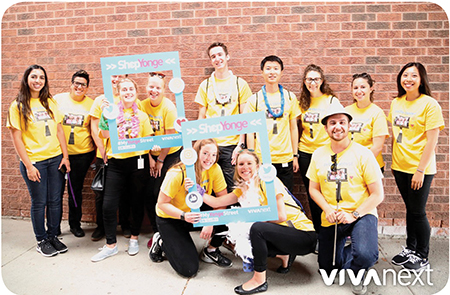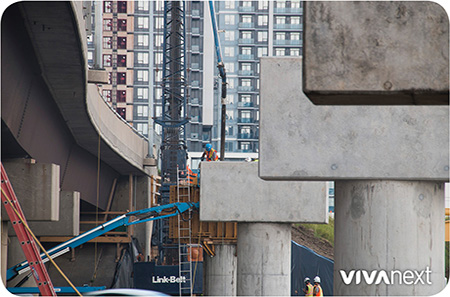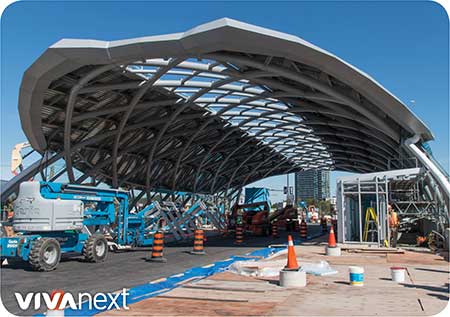
Here’s a question: what do some of the most impressive structures in the world, including many of the great cathedrals of Europe and the Pantheon in Rome, have in common with our new bus rapid transit station at the Vaughan Metropolitan Centre?
The answer: they’ve all followed the same basic construction technique for building a dome, which has been around for at least 2,000 years.
Domes have traditionally been reserved for a select number of important buildings which need to be impressively open and dramatic. Another reason there aren’t a lot of domes is because they’re more difficult to build compared to standard rectangular buildings. We loved the idea of creating an open and airy space for the Vaughan Metropolitan Centre rapidway station, making it big enough for viva buses to drive right through. We also wanted it to be special, and symbolic of Vaughan’s new downtown.
Although building materials may have evolved over the past 2,000 years, the general approach for building domes hasn’t really changed. First, strong, deep foundations are constructed to take on the full weight of the dome. Then, a temporary support structure is built. Gradually the permanent exterior shape is created up around the support structure until the dome is closed at the top. Once the dome is complete and able to support itself, the temporary support structure is removed, piece by piece.
Ancient domes would have had wooden temporary support structures, with the outer dome made of stones added one at a time. Although the materials we used are modern, we followed the same classical construction technique. First we built a steel temporary structure. Over that we installed the station’s outer dome, a steel frame welded together one segment at a time.
With the outer steel structure fully installed and all the structural welding complete, we carefully removed the temporary support structure one piece at a time, which took a couple of weeks. After this process was complete, construction inside the station began.
All the weight of the station is supported by the subway structure underneath the station, and 25 metre-deep piles or caissons which extend underground to the same level as the subway.
With its glass and steel shell exterior and high-tech comfort and amenities inside, we know you’re going to love using our new station for its modern look and functionality. But you can be proud of the fact that, from an architectural standpoint, it’s joining a pretty special group of buildings that have been built to stand the test of time.

